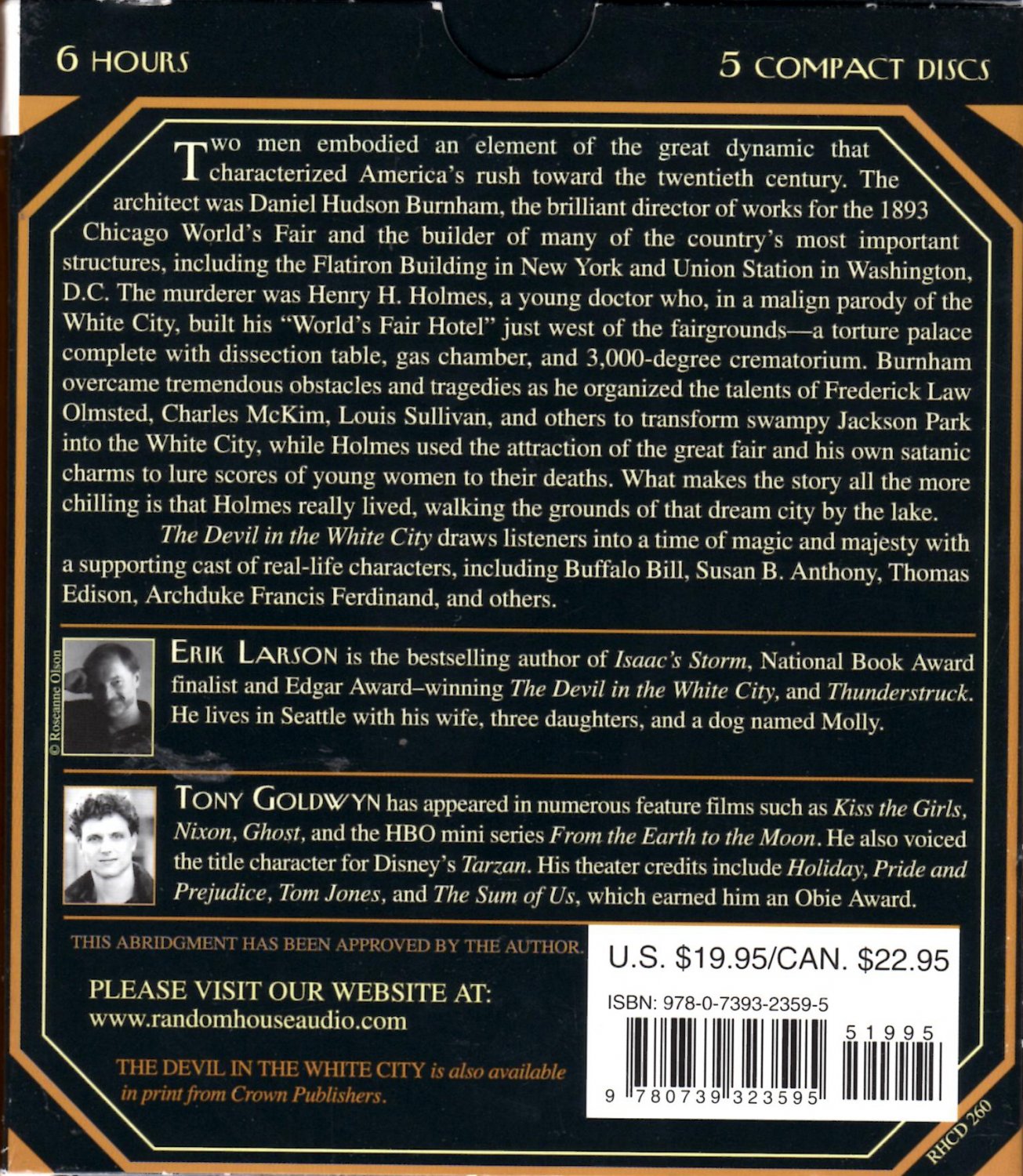


There’s been an uptick lately in the level of interest in stories of the true crime variety, so I figured this was a good time to dive in. As a result, it’s been on my to-be-read list for many years now. I was too busy at the time - working full-time and getting ready to move across the country pretty much up until the days before orientation started - and skipped it. According to the maps, we would have been located between Old Vienna and the Moorish Palace. It was an apt choice - our building is located along the Midway Plaisance which served as the entertainment area for the 1893 World’s Fair featured in the book. Anthony, Thomas Edison, Archduke Francis Ferdinand, and others. Erik Larson’s gifts as a storyteller are magnificently displayed in this rich narrative of the master builder, the killer, and the great fair that obsessed them both.When I first moved to Chicago for grad school, we were assigned The Devil in the White City by Erik Larson as recommended summer reading. The Devil in the White City draws the reader into a time of magic and majesty, made all the more appealing by a supporting cast of real-life characters, including Buffalo Bill, Theodore Dreiser, Susan B. What makes the story all the more chilling is that Holmes really lived, walking the grounds of that dream city by the lake. Holmes, a young doctor who, in a malign parody of the White City, built his “World’s Fair Hotel” just west of the fairgrounds-a torture palace complete with dissection table, gas chamber, and 3,000-degree crematorium.īurnham overcame tremendous obstacles and tragedies as he organized the talents of Frederick Law Olmsted, Charles McKim, Louis Sullivan, and others to transform swampy Jackson Park into the White City, while Holmes used the attraction of the great fair and his own satanic charms to lure scores of young women to their deaths. The architect was Daniel Hudson Burnham, the fair’s brilliant director of works and the builder of many of the country’s most important structures, including the Flatiron Building in New York and Union Station in Washington, D.C. Two men, each handsome and unusually adept at his chosen work, embodied an element of the great dynamic that characterized America’s rush toward the twentieth century.



 0 kommentar(er)
0 kommentar(er)
